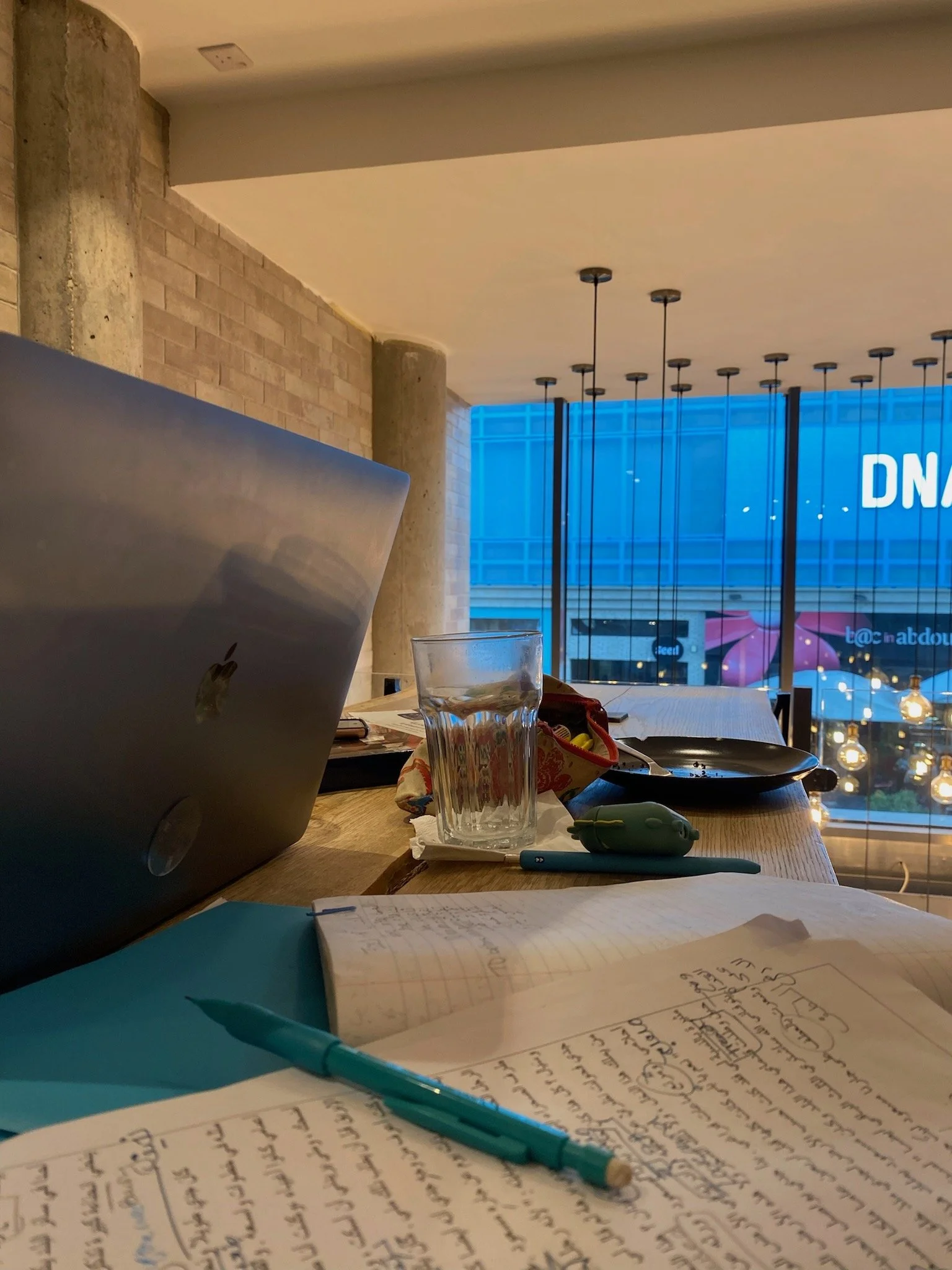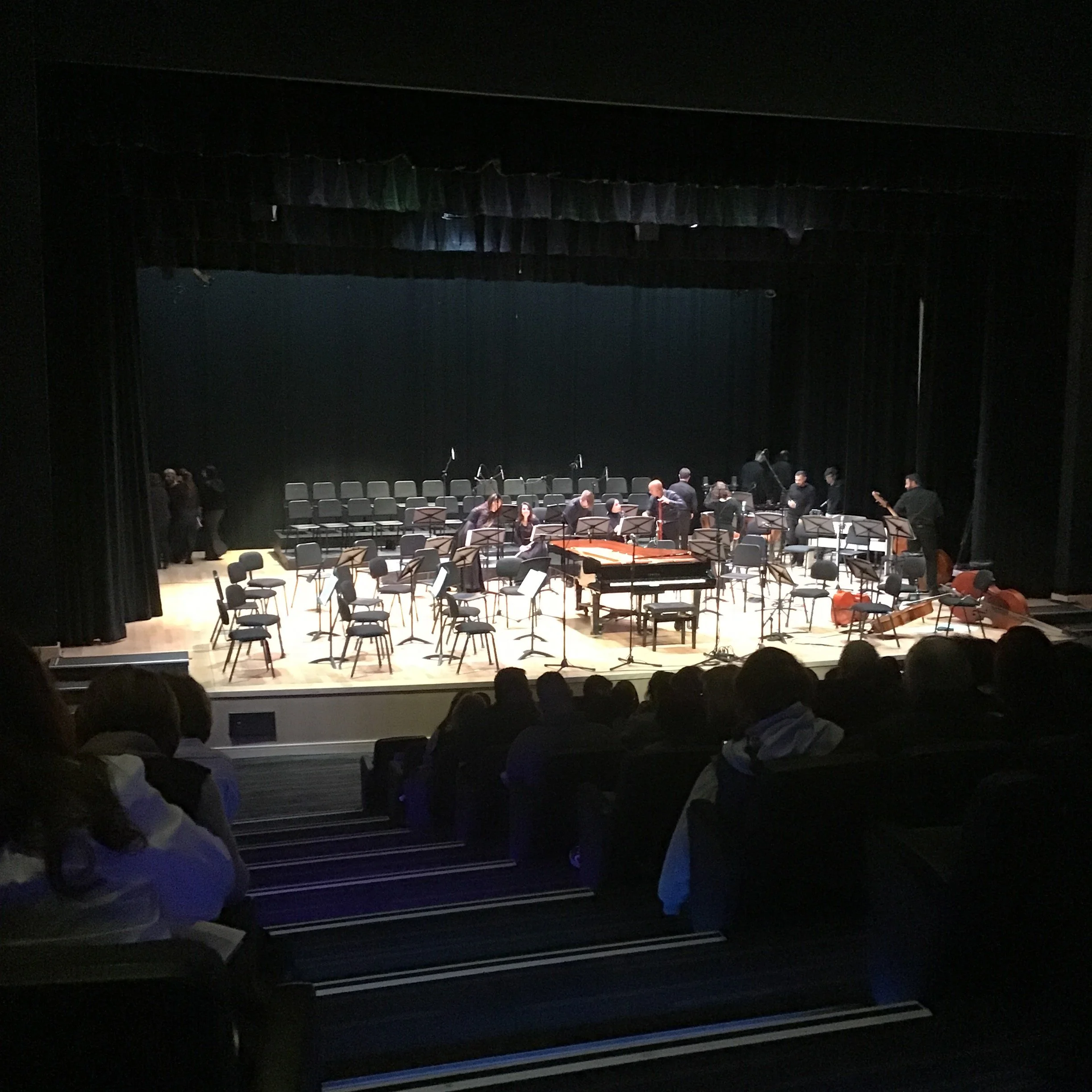"Arabic Phonetics: Speech production from a language-learning perspective" by Sela Dombrower
One of the biggest challenges of learning a new language can be the formation of unfamiliar sounds. The articulators are muscles—like any other muscle, we can exercise them to build new skills over time. This is true even for children. On average, children up to seven years old are still learning how to pronounce words in their first language.[1]
This is all to say that mistakes are unavoidable for everyone, despite the contested statement that ‘children are better language-learners than adults.’ Humans of all ages are not perfect absorbers of language, but we are productive learners. Knowing a bit about the science of language can help accelerate the process, through awareness of the tools we have.
Phonetics is the study of speech production—how our articulators move, our vocal cords vibrate, and the resonance of different sounds in the air and their perception.[2] I’ll give a brief background on speech production, and offer tips for pronouncing some of Arabic’s unique and beautiful sounds.
I suggest opening this map of the articulators as you read. While I can’t include images for copyright reasons, looking at a picture or hearing a sound can make a lot more sense than words on a page! Here is also an interactive website for hearing the sounds I’ll describe, and a video for how it can make more sense.
Overview:
Most sounds in human language, and all sounds in Arabic, are pulmonic egressive, which means the air is produced from the lungs and pushed outward through the throat and various cavities. MSA (Modern Standard Arabic) has 6 vowels and 28 consonants, many shared with English.
Arabic has three short vowels and three long vowels. The three sounds are: /i/, /a/, and /u/, or the same vowels as in ‘meet,’ ‘fall,’ and ‘do.’ However, vowel length changes meaning in Arabic, unlike in English. While many words where only the vowel length differs will be related in meaning, this is not always the case. For example: Har = ‘heat’ and Haar = ‘hot.’
Consonants:
Arabic and English share 18 consonants, with small differences in place of articulation.[3] Understanding these subtleties can help someone sound like a native speaker, if that is one of their goals.
For instance, the sounds “t” and “d” in English are usually pronounced with the tip of the tongue against the alveolar ridge (the ridge behind the teeth, illustrated here). In Arabic these sounds are alveolar-dental, which means the tip of the tongue comes into contact with the teeth. This article goes into more depth if you’re interested. I’ll focus more here on the sounds totally unique to Arabic from an English-speaking perspective. These are the uvular, pharyngeal, and emphatic consonants described below.
غ
The letter غ in Arabic—usually transliterated as gh—is a uvular or velar-uvular consonant, where the uvula or velum (depending on dialect) comes into contact with the base of the tongue as the air passes through the throat. This is also a sound found in many European languages such as German and French. It’s annotated as /ʁ/ or /ɣ/ which you can hear here.
If this is new, it may be hard to produce at first, but is totally possible with practice. I like to find words that contain my target, unfamiliar sounds and repeat them throughout the day. This helps put the sounds in context and practice using certain muscles.
ع
This letter, often transliterated as 3 or an apostrophe, is a pharyngeal consonant. If you open your mouth and make an ‘ahh’ sound, then move the vowel back through your throat, the pharyngeal wall (against the back of the throat) will constrict.
ض، ص، ظ
These sounds are emphatic versions of the familiar sounds ‘d,’ ‘s’, and ‘th.’ The throat once again constricts, adding depth to the sound. Here’s a great video about emphatic consonants in Arabic.
ق
This is an emphatic version of the ‘k’ sound, where the point of contact is between the back of the tongue and the uvula. In English, ‘k’ is pronounced with the middle of the tongue against the velum; try saying ‘k’ and instead pushing the tongue against the back of the throat.
ح
The emphatic 'h' occurs when the glottis constricts. In American English, the word 'uh-oh,' contains a glottal stop between the vowels; that same articulator makes the emphatic 'h' sound when it allows air to pass through.
خ
This sound is similar to that of clearing your throat. It’s often transcribed as ‘kh,’ and is annotated as /x/ on the interactive chart.
Here are some more resources for Arabic pronunciation, to practice hearing and imitating native speakers:
https://www.youtube.com/watch?v=8_60iWXl7dw
https://www.youtube.com/watch?v=XLm72nybrbs
While I find that linguistics helps me put languages in a larger context, it is not necessary to succeed as a language learner. Just remember to be patient with yourself and have fun throughout the process!
[1] “Speech Sounds Development Chart,” Kid Sense, accessed Oct 11 2022. https://childdevelopment.com.au/resources/child-development-charts/speech-sounds-developmental-chart/.
[2] Elizabeth C. Zsiga, The Sounds of Language: An Introduction to Phonetics and Phonology (Linguistics in the World). (Malden, MA & Oxford: Wiley-Blackwell, 2013.) ISBN: 978-1-405-19103-6.
[3] Iram Sabir and Nora Alsaeed, “A Brief Description of Consonants in Modern Standard Arabic,” Linguistics and Literature Studies 2, 7 (2015): 185-189, DOI: 10.13189/lls.2014.020702.
Sela Dombrower is a junior at Lawrence University and is studying abroad on the Amideast Area and Arabic Language Studies Program in Amman, Jordan this fall 2022.






